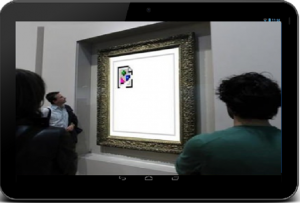[Thesis] Google Art
A new view on museum and virtual museum traditions
Although this MA thesis was submitted last semester, it remains relevant for how we peruse our cultural heritage today. I would like to share the abstract with you.
Abstract
Google Art as massive digitization project shows art in better way than meets the eye, displaying artworks in extreme detail and navigating through museum space. The project is a mixture of old and new traditions in presenting art to the larger public. Digitization is not without effect, the past has shown that former relations get rearranged to new proportions. It is important to come to an indication what these traditions are and what the significance of the medium is, on determining the replacement of the changed conditions. Towards a better grasp on what this may mean and for who it may concern, museum institutions, museum workers, artists, museum visitors and the notion of digitized art visually represented in navigable space.
The task of the museum as an institute is to collect, preserve and present art within an exhibition space to the public. Not all of these tasks are same executed by Google, than the art performance on their project website, as the website lets no space anything other than the artworks. This results in a strange clinical materiality of the artworks in their simulation.
The functionality of the website leaves room for educational purposes and knowledge sharing, but the arrangement of the exhibition space does not meet these tasks.
Google Art involves thousands of artwork, multiple art collections and museum space, connected in virtual space, classified without any indexation other than a random path way through the collections, creating individual art performances with every click through the navigable space. The art experience that comes to construction within this space is determined by the architecture of the interface, which functions on top of a database structure. This may sound like an experience of the virtual museums of the mid 90’s; nonetheless the interface serves a different dish. Google knows how to structure information, it is their core business and they are extremely good at it.
What are the consequences for Google curating by design our cultural heritage on such a large scale? A first step towards such a matter is to ask: “What kind of museum is Google Art?” What kind of institutional project, participants and content and virtual place, result in what kind of art experience? And how can this be understood along the insights of new media theory? Because, it is not the first time old and new traditions class into something else. What is that something else, how can we think of it and what is its effect?
In a multiple descriptive case study Google Art is discussed and brought into relation of new media theory of database structured navigable space, resulting in a material simulated experience at the interface of the Google Art website. Its art experience results in an emotional simulated oscillation of signs and shows a new view to the conventional use of art and former relations of the museum and virtual museum traditions.

